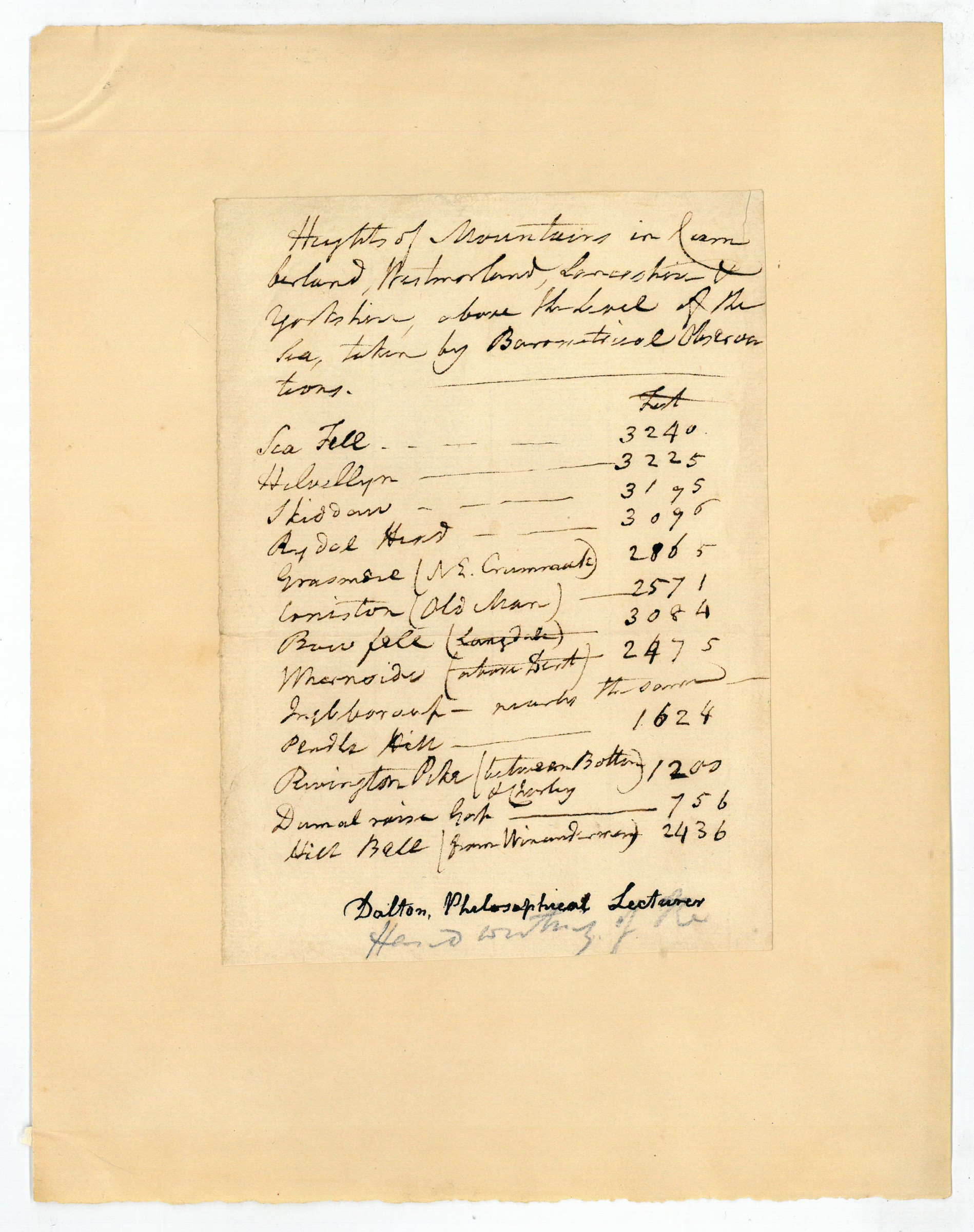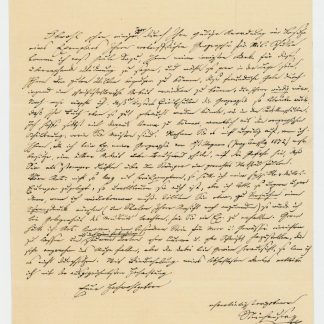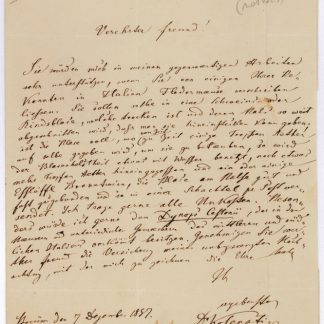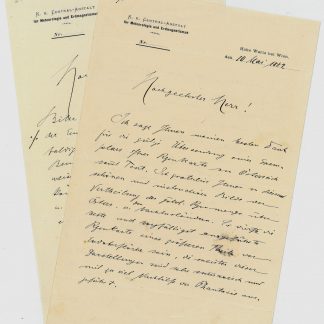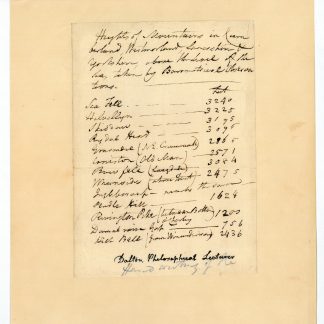The Old Man of Coniston measured at 2571 ft
Heights of Mountains in Cumberland, Westmorland, Lancashire and Yorkshire.
8vo. 1 p. Mounted on larger backing paper.
€ 1,800.00
The influential English natural scientist John Dalton is best known today for his work on atomic theory and his contribution to the ideal gas laws. A native of Cumbria, Dalton was also, however, an avid fellwalker who is estimated to have ascended the peak Helvellyn in excess of 40 times over the course of his life. The present autograph is a testimony to Dalton's pleasure in bringing together his passions for science and the great outdoors. It records the "Heights of Mountains in Cumberland, Westmorland, Lancashire and Yorkshire above the level of the sea, taken by barometrical observations" in a list of thirteen peaks and their altitude in feet: "Sca Fell [!] -- 3240; Helvellyn -- 3225; Skiddaw -- 3195; Rydal Head -- 3096; Grasmere [!] (NE. Crummock) -- 2865; Coniston (Old Man) -- 2571; Bow fell (Langdale) -- 3084 ..."). Dalton's work on the heights of the Lakeland fells would be standard until the late-19th century efforts of the Ordnance Survey.
After moving to the city of Manchester to take up a life of teaching and research from the age of 27, Dalton returned regularly to the Lake District during the holidays when he took the opportunity to measure the heights of the mountains as he walked. Earlier in his life, the scientist had perfected to this end the construction of a barometer, which he carried with him to record readings as he went. The best results were obtained from simultaneous pressure readings from a pair of inter-calibrated and temperature-corrected barometers. It was while climbing Skiddaw with his barometer in July 1812 that Dalton first made the acquaintance of the Lake District geologist and guide Jonathan Otley. Otley later accompanied Dalton as a companion and paid guide on many of his climbs between 1812 and 1836.
The well-preserved inventory of fells and altitude measurements is on a single-sided piece of note paper with absolutely minimal damage or marking. The title and list are in Dalton's hand. Two further hands (one in dark ink, a second in pencil) add six words of commentary on the object and its author. The small 8vo page is affixed to a larger sheet. Overall, a splendid piece of evidence for the ongoing scientific interest in the Lake District, which went hand-in-hand with contemporary Romantic idealisation of its landscapes.
Cf. D. Howe, Rocks and Rain, Reason and Romance: The Landscape, History and People of the Lake District (Glasgow , 2019). S. Ross, "John Dalton’s Lakeland Excursions". Notes and Records of the Royal Society of London, 53.1 (1999), pp. 79-94. A. L. Smyth, John Dalton: 1766-1844; a Bibliography of Works by and about Him. (Manchester, 1966).

